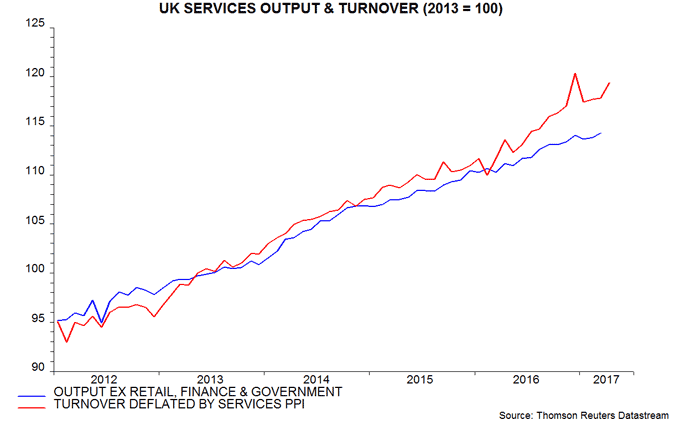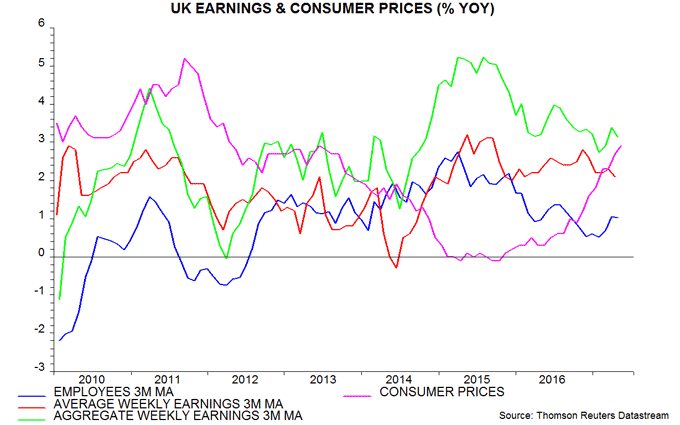Recent UK data and the election result have increased pessimism about economic prospects. A sober view is warranted but not all recent news has been negative.
Industrial and construction output numbers for April, released last Friday, were weak – 0.4% and 1.5% respectively below first-quarter averages. This caused analysts to scale back forecasts for second-quarter GDP growth.
An accompanying report, however, on services turnover was more encouraging, though received little attention. The turnover survey is an important input to services output, for which an April number will be released on 30 June. Adjusted for seasonals and estimated inflation, turnover rose solidly in April – see first chart. 
The retail sector is not covered by the turnover survey. It will contribute +0.17 percentage points (pp) to the monthly change in services output in April, since retail sales volume rose by 2.5% and retailing has a 7.1% weight. (There will be a -0.08 pp contribution in May, based on yesterday’s news that sales volume fell by 1.2% last month.)
A monthly rise in services output of as much as 0.5% in April does not look unreasonable based on these indications. If realised, the implied level of GDP in April – taking into account the weak industrial and construction data – would be 0.4% above the first-quarter average. GDP, that is, would be on course to expand respectably in the second quarter, following first-quarter growth currently reported at only 0.2%.
Negative commentary has also focused on this week’s news of an intensifying real wage squeeze, with consumer price inflation up to 2.9% in May but annual growth of average weekly earnings down to 2.1% in the three months to April – second chart.
Aggregate employee earnings, however, are still rising faster than prices, reflecting solid growth in employee numbers – up by 1.0% in the three months to April from a year before. Aggregate earnings rose by an annual 3.1% in the latest three months. They lagged prices significantly during the last inflation spike in 2011, when employee numbers fell.
Monetary trends are signalling a second-half economic slowdown, with six-month growth of real narrow money falling since late 2016 – third chart. The corporate component, however, is holding up, suggesting that businesses still expect to increase investment and jobs; corporate (i.e. PNFC*) real narrow money has contracted before recessions historically. The drag from consumer spending weakness, meanwhile, may be partly cushioned by a slowdown in imports.
*PNFC = private non-financial corporations.